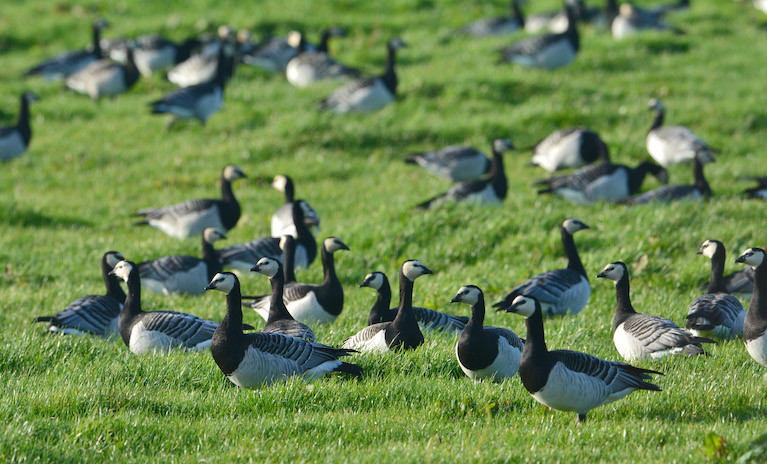110 years ago Robert Lloyd Praeger brought a group of eminent European scientists to Clare Island to map the flora, fauna, geology and archaeology of the small, exposed Atlantic island off the coast of Mayo. The Royal Irish Academy’s New Survey of Clare Island, a unique multidisciplinary endeavour that together with Praeger’s first Clare Island Survey provides an invaluable body of research informing future conservation of the natural and built heritage of Ireland and Europe.
In a new book, New Survey of Clare Island. Volume 9: Birds, published on Monday, 17 August to celebrate Heritage Week 2020, the editor Tom Kelly traces the story of the birds from Clare Island.
One of the most dramatic changes has been the arrival on Clare Island of the formidable and spectacular seabird the Great Skua—or Bonxie—which now breeds further south in Ireland than it does in Great Britain. This unexpected change—a species moving south rather than vice versa—at a time of global warming remains to be explained.
 A Great Skua Photo: Richard T. Mills
A Great Skua Photo: Richard T. Mills
Clare Island became separated from Ireland about 8,000 years ago by rising sea levels brought about by the melting of the massive ice sheets that formed during the last Ice Age. Although this dramatic event would have had a minimal impact on the birds that made the island their home.
The Lapland bunting and the snow bunting probably arrived first, followed by more sedentary species including the rock ptarmigan and gyrfalcon as well as many wildfowl and wading bird species.
In the three millennia that followed the formation of Clare Island, mature woodland developed allowing a woodland bird community to develop.
 The Clare Island survey
The Clare Island survey
Neolithic man arrived about 4,000yBP (years Before Present). Over the succeeding 3,500 years or so, the woodland element was gradually removed and about 400 years ago the modern agricultural landscape was established. The woodland bird community on Clare Island has become mostly extinct probably because its habitat gradually disappeared over the millennia, In addition, the famines of the early to mid-nineteenth century had an impact on the ecology of the inhabited offshore islands. The abandonment of land as a result of famine, and the peoples who occupied that land, is well known to cause the departure of synanthropic bird species.
Nevertheless, agricultural activity and the expansion of grasslands created opportunities for seed-eating species and ground-nesting forms such as the skylark and meadow pipit and migrants such as the northern wheatear and corncrake, and the extraction of peat created opportunities for wetland species. Well-known species such as the house sparrow, European robin, song thrush and perhaps the barn swallow have colonised the island.































































